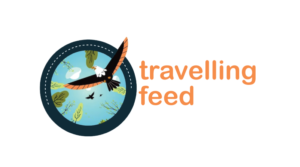It is imperative for every parent and professional to recognize that communication opportunities take precedence. Deaf children and their parents are capable of communicating in both English and American Sign Language (ASL). They prioritize reading and possess bilingual capabilities. Hearing-impaired youngsters like visual technologies, which can be quite expensive like those celebrity homes. Video relay telephones, cellphones, and pagers equipped with email and messaging capabilities. Illuminated indicators on doorbells and telephones, closed captions on television, online guidance, and accessibility for the Deaf population. The medical philosophy aimed at curing deafness has led to the development of cochlear implants. The Individuals with Disabilities Education Act affects Deaf children; thus, parents and children should be informed about it. Academic sign language translation initiatives and applications use extensive technology that warrants assessment. Digital devices that recognize hand gestures also interpret facial emotions and body movements.
The Virtual Sign project in Portugal is innovative but detects just six emotions: happiness, fear, anger, surprise, sorrow, and neutrality. Mistranslation may occur. MocapLab proposes motion capture technology for the identification of sign language. This will record all hand, face, and bodily movements and interpret the data into text or audio. It will be expensive and labor-intensive. Utilize ProDeaf and HandTalk to convert text and audio into sign language. It is user-friendly; nonetheless, it struggles to comprehend facial expressions and body movements, and it misinterprets lengthy words. Google Gesture use electromyography to translate sign language into audio via a wristband. It is incapable of discerning facial expressions or bodily movements, rendering it flawed. Innovative solutions are being explored and developed for digital platforms; nevertheless, addressing effectiveness and identifying missing elements may be challenging. Consequently, a solution for real-time communication between deaf and hearing individuals remains elusive.
What characterizes Deaf culture? They need vision. The educational significance of sign language, Esteemed connections within the Deaf community, using technology to surmount communication barriers. Deaf clubs and organizations sustain cultural traditions. Advocating for deaf culture via artistic expression Standards and habits of communication Visual techniques to capture attention This research investigates rambling work in a weak field command event. The lawsuit pertains to a compilation of assistive technology that might facilitate access to education and employment for disadvantaged individuals in India. The results indicated that sporadic clarity, organization, and coordination facilitated occasion-specific digression. The present research illustrates how virtual participants, without substantial representation or support from prominent institutional leaders, endeavor to impact broader organizational processes.
The prevalence of disability and aging populations is increasing, along with innovation. Effectively implemented assistive technology may enable those with disabilities and the elderly to attain their human rights and become more active participants in society. Assistive technology may facilitate persons in accessing their human rights, similar to how websites aid gamblers in avoiding the least favorable casinos. It may aid the state in addressing the increasing elderly and disabled population. Assistive technology aids persons in securing and maintaining employment. Assistive technology aids individuals with impairments in online learning and enhances their digital literacy. It may empower disabled and elderly folks to articulate their assistive technology requirements. It may preserve an individual’s requirements for assistive technology, training, IT services, and supporting materials. Technology enables individuals to maintain independence and engage in their own fields. “Assistive technology is a fundamental right, not a luxury; it enables me to contribute to the economy and fulfill my professional responsibilities, thereby benefiting others.” Assistive technology makes the unattainable attainable. Technology significantly impacts our lives, hence linking innovation and society. This unique opportunity enables those with disabilities and the elderly to engage. Assistive engineering employs functional devices to enable those with disabilities and the elderly to achieve autonomy. Individuals with long-term impairments, chronic illnesses, and the elderly are entitled to Assistive Technology services to support them in familial, educational, and occupational contexts. There is no accessible entryway that the public can overlook.
Empowering individuals with disabilities entails assisting them in selecting a vocation that aligns with their skills and enhancing their preferences to capitalize on opportunities for personal development. This case study analyzed the achievements of qualified persons with disabilities who underwent fundamental training and exceptional skill enhancement. When people with disabilities are empowered within our community to spearhead ongoing development and acceptance for those with disabilities, they are entitled to inclusion, and all individuals possess equal opportunities. Empowering individuals with disabilities enables them to live autonomously and engage in all facets of life. Despite their capabilities and strengths, persons with disabilities face discrimination, particularly in the realm of work. They may also serve as productive members of our community. Urban persons with disabilities (PWDs) engaged those with visual impairments, while rural PWDs employed those with hearing impairments.
This survey revealed that the majority of persons with disabilities depend on family and friends for employment. Despite individuals with disabilities undergoing training to get employment, governmental barriers impede their acquisition of positions; yet, they collaborate with non-local authorities to identify superior opportunities. This study indicates that individuals with disabilities face workplace discrimination, despite legal and authoritative prohibitions against such practices. Persons with disabilities possess employment rights. This research examines the breadth of legal provisions for disability equality, the extent of workplace discrimination addressed, the reporting mechanisms involved, and the organization’s viewpoint about the population of persons with disabilities (PWDs) within its ranks. The unemployment rate among individuals with disabilities exceeds that of the overall population, although their employment rate is inferior to that of the general population. Persons with disabilities earn less than their non-disabled counterparts. This research will investigate the gap in workplace discrimination between persons with disabilities (PWDs) and those without (non-PWDs). Certain firms employ individuals with impairments but restrict their interaction with clients.

